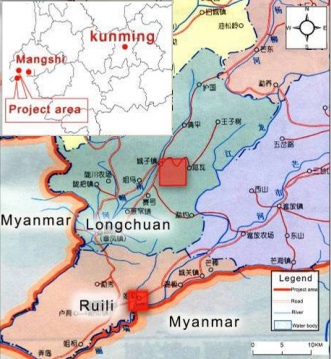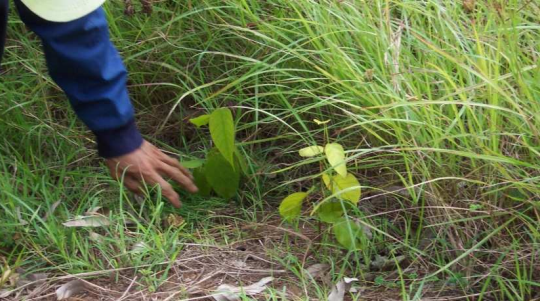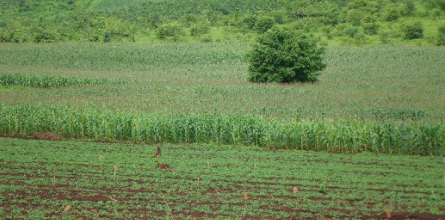Project title: Sustainable Forest Rehabilitation and Management for the Conservation of Trans-boundary Ecological Security in Montane Mainland Southeast Asia– Pilot Demonstration Project of Lao PDR, Myanmar and China/Yunnan (SFR-MMSEA) [2012P2-UNU]
Executing agency: United Nations University Institute for the Advanced Study of Sustainability (UNU-IAS)
Implementing Agency: UNU-IAS, Yunnan Academy of Forestry, China (YAF), Department of Agricultural Land Management, Lao PDR (DoALM), Forest Research Institute, Myanmar (FRI)
Technical assistance partners: The Yunnan Academy of Forestry, China (YAF); The National Agriculture and Forestry Research Institute , Lao PDR (NAFRI); The Forest Research Institute, Myanmar (FRI)
Budget in USD (total/APFNet grant): 650,000/ 500,000
Duration: 01/2013 - 12/2015
Project Category: Demonstration Project
Target economy: Lao PDR, Myanmar, and China
Objectives:
Outputs:
Output 1: Knowledge of ecological, social, cultural, and economic processes associated with forest degradation and rehabilitation in pilot sites is enhanced.
Output 2: Replicable and adaptable model for community-based rehabilitation of degraded forest practices and related toolkits are developed and demonstrated at pilot sites.
Output 3: The capacity of different target groups, including local communities and authorities, and young researchers in sustainable rehabilitation and management of degraded forests through tailored made capacity-building programmes is strengthened.
Output 4: Strategies and mechanisms for up-scaling the effective practices on sustainable rehabilitation and management of degraded forests are developed and disseminated.
Activities:
Activity 1.1 & 1.2: Basic filed inventory of natural resources status, review of experiences and lessons learned from past forest rehabilitation and management in MMSEA, and identification of good practices.
Activity 1.3: Participatory planning for sustainable forest resources management at each pilot project site.
Activity 2.1 & 2.2: Establishment of upland nurseries, soil improvement, and rehabilitation of degraded forest land.
Activity 2.3 & 2.4: Upland agroforestry-based models and participatory social fencing for natural regeneration of degraded forests.
Activity 2.5: Alternative rural energy development to reduce pressure on fuel wood collection.
Activity 3.1 & 3.2: On-site and in-house training/exchange for different target groups, stakeholders, and partners on interdisciplinary assessment of forest degradation and rehabilitation.
Activity 4.1 & 4.2: Synthesis of the project findings for up-scaling from local to sub-regional levels and establishing an information network among participating institutions to exchange relevant information and experiences.
Project background
The Montane Mainland Southeast Asia (MMSEA) encompasses the northern region of Thailand, Lao PDR, and Vietnam, the Yunnan Province of China, and the Kachin and Shan States of Myanmar and borders Northeastern India. MMSEA is home to a diversity of ethnic minority groups, tropical forests, and endangered and endemic species of global significance. MMSEA serves as a watershed for a few large rivers in the sub-region, including the Lanchang-Mekong, the Ru-Salween, the Red River, the Yaluzangbu-Brahmaputra, the Irrawaddy, the Pearl River, and the Yangtze. However, the region suffers from severe deforestation with negative impacts on ecology, hydrology, and local livelihoods, resulting from inappropriate land use change under internal and external pressures. Past efforts to rehabilitate degraded land often established mono-species plantations with limited contribution to the restoration of ecosystem services.
The project aims to create new knowledge and alternative options for community-based sustainable forest rehabilitation and management for up-scaling and replication in the wider MMSEA region to improve upland people’s livelihoods and safeguard the transboundary ecological security in the MMSEA region.
Target groups are local communities and governments around four demonstration sites, two in Yunnan Province of China (Puwen site in Xishuangbanna Prefecture and Ruili sub-site and Longchuan sub-site in Dehong Prefecture), one in Northern Myanmar (Nawnghkio site in Shan State) and one in Northern Lao PDR (Xiengngeun site in Luang Prabang Province) (Fig.1).

Fig.1 Map of the project area
Project featured topics
Forest Rehabilitation Practices
The review of local experiences and lessons of forest rehabilitation was conducted through literature and field surveys. The review investigated both traditional practices and scientific forest rehabilitation and management technologies. It provides overviews of the status of national forests, including changes in forest policies, legislation, strategies, and approaches to forest rehabilitation in the economy. Several models were tested in each economy to rehabilitate degraded lands at the demonstration plots. The best scientific practices and traditional knowledge of forest rehabilitation, including techniques for preparing seedlings and planting materials, techniques for soil improvement in degraded areas for tree planting, agroforestry systems, including understory cultivation, and packages for alternative rural energy, have been observed. In Myanmar, the traditional knowledge covers good practices of home garden, farm forestry, spiritual forest protection, water source forest protection as well as community forestry to rehabilitate degraded forests. In Lao PDR, a good model for rehabilitating degraded forests turned out to be assisted natural regeneration (ANR): Three principal reasons for applying ANR are to 1) reduce forest restoration cost, 2) speed up forest restoration, and 3) enhance plant diversity. ANR can be used in all areas where forest restoration is required: grasslands, areas dominated by brush or small trees, and young secondary forests or gulley forests. In grassland areas, many sprouts and seedlings of woody species and other non-glass plants grow within and among the grass with the natural process of plant succession. If these seedlings are free from competition and protected against destruction and damage, they grow successfully within a short time and begin to dominate and suppress the grass. Fig.2 shows woody species growing under and among the grass. Regular weeding of all unwanted species is important to support the regeneration of valuable trees. In Yunnan, many indigenous trees, such as Betula alnoides and Alnus nepalisis, have been selected, successfully cultivated, and promoted at a large scale. The traditional home garden of the Dai people is a good practice. Furthermore, some toolkits were developed to train local technicians and villagers.

Fig.2 Woody species growing under and among the grass in Lao PDR
Participatory planning for forest rehabilitation
During participatory planning of forest rehabilitation, local communities, local officials, and scientists were involved in addressing deforestation and forest degradation issues. The priority areas for experimentation and demonstration of forest rehabilitation were identified. Site-appropriate models for forest rehabilitation were designed, considering the review of best practices to enhance the environmental services of commercial plantations and the economic values of secondary forests—the priority areas covered at least 25 ha for each project site. Along with planning for forest rehabilitation, some locally preferred tree species were selected through the participatory process.
Project Outcomes

Fig.3 Maize and groundnut cultivation in Taungya of Myanmar
A more realistic goal of the project was to focus on the agriculture-forest landscape in the region. Several experiments developed in the four project locations in China, Laos, and Myanmar would qualify as new tree production or agroforestry options. However, they still need to be evaluated rather from their economic perspective, which determines the likelihood that farmers can adopt them as models will need to produce clear economic benefits first. This could be achieved through rigorous cost-benefit analyses of each model. It is suggested that there is a need to design sustainable models that integrate economic and ecological benefits for forest rehabilitation and alternative livelihoods. If local farmers are involved in the selection of appropriate models of forest rehabilitation, models can further benefit from farmers’ perspectives and knowledge, which helps future replication.
 Project documents
Project documents
2012P2-UNU Project proposal
2012P2-UNU Project Completion Report
2021P2-UNU Thematic report on Sustainable Forest Rehabilitation and Management Plan for the project site in Laos
2021P2-UNU Thematic report on Field Assessment of Forest Resources for the project site in Myanmar
2021P2-UNU Thematic report on best practices of forest rehabilitation practices in Myanmar